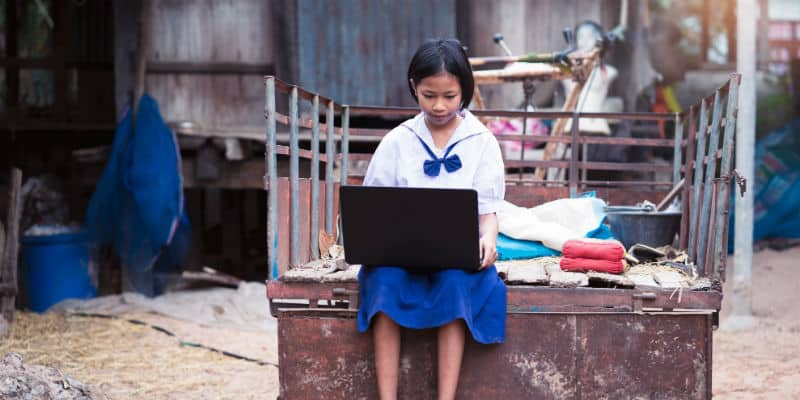New York City has been unusually quiet during the COVID-19 pandemic, but every night at 7:00 pm that changes for a few short minutes. New Yorkers, forced inside because of quarantine, emerge at open windows and balconies to applaud, cheer and even bang on pots and pans in a show of solidarity and appreciation with the city’s healthcare workers.
The sight of people cheering from windows in major cities like New York is just one example of the widespread unity and resilience that’s emerged among people throughout the world in recent weeks. News outlets have reported stories of professional athletes forgoing paychecks to help compensate stadium workers, people hand-sewing facemasks and donating medical supplies, and neighbors volunteering to buy groceries for the elderly. All of this comes as caregivers heroically put themselves at risk through their long days of work on the frontlines of the crisis and scientists work tirelessly behind the scenes to create a vaccine.
The pandemic has taught us the encouraging lesson that humans are resilient and unstoppable when we set our collective will to solving a common problem. This ought to lift our sights regarding the magnitude of problems we can overcome when we set our minds towards doing so. As the world bands together to beat a pandemic, let’s take note of two lessons to apply when we turn our attention to tackling long-standing problems, such as poverty.
To solve a problem, address all its parts
COVID-19 is a physical disease, but it has infected finances, relationships, mental health, and many other facets of people’s lives to a great degree as well. As my colleague Efosa Ojomo recently wrote, one of the key lessons learned since the pandemic began is that the virus isn’t a problem that can be solved by strengthening the healthcare system alone. Minimizing the spread of the disease depends on the economy continuing to function so that people can obtain essential goods as they shelter-in-place. At the same time, the economy’s ability to function in the long run will depend on a medical solution that enables people to safely consume goods and services. It’s an interdependent problem, and many governments have recognized that it needs an interdependent solution that addresses all of its facets at once, such as implementing travel restrictions and financial bailouts alongside aid for healthcare systems.
Like COVID-19, many challenges faced in low- and middle-income countries are enormously complex and interdependent, and piecemeal solutions that address singular facets of them are often ineffective. This situation can manifest itself, for example, when a nonprofit goes to a low-income country and builds a new school in an impoverished community. It’s a solution that may make education a little easier in the short run, but it ignores the complexity of the problem.
Having a good school building is just one part of the complex, interdependent problem of education in many low- and middle-income countries. True, students may have a better environment in which to learn, but it may not do much good if many of them need to spend their days earning money for their families or lack access to learning materials. What’s more, spending time in school may not make as much sense to many students if they have poor prospects of finding a good job afterward. All these problems affect each other. As with COVID-19, interdependent problems need interdependent solutions, something we’d do well to remember after the pandemic recedes.
It’s not enough to treat the symptoms
Another key lesson from the pandemic is the need to improve our understanding of what causes what, since doing so enables us to fight problems at their root. The scientific community has made vast strides since facing pandemics in the past, such that it’s come to understand how diseases like COVID-19 spread and how to stop them. It’s not enough to simply wait to treat those who fall ill with the virus—preventative measures are needed, like social distancing and eventually a vaccine, to stop it from spreading.
When it comes to poverty, too often development policies focus exclusively on treating the symptoms of poverty. This is the economic equivalent of letting COVID-19 run wild while medical professionals wait in under-equipped hospitals to treat infected patients as they come in. A long-term solution to the problem necessitates a better understanding of what causes prosperity and then implementing those solutions.
As we’ve grappled with this question at the Christensen Institute, our findings show clearly that one of the best avenues to prosperity is through the implementation of market-creating innovations. These innovations transform previously expensive, complicated products into ones that are simple, affordable, and accessible. As new populations of people begin to consume these products, it kicks off a domino effect of prosperity that pulls jobs, profits, infrastructure, and a culture of entrepreneurship into societies. Market-creating innovations have helped prosperous countries get to where they are today. A heavy dose of this type of innovation could be the engine that drives many poor countries towards prosperity in the future.
The pandemic has taught hopeful lessons about the global community’s collective ability to solve difficult problems. By learning from these important experiences, we will emerge more capable than ever to combat poverty and other problems we have left to solve.


